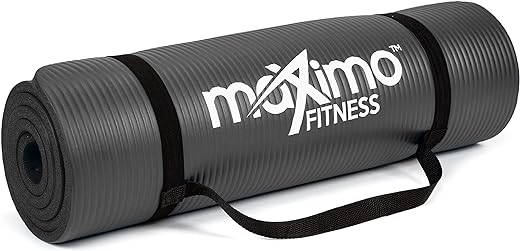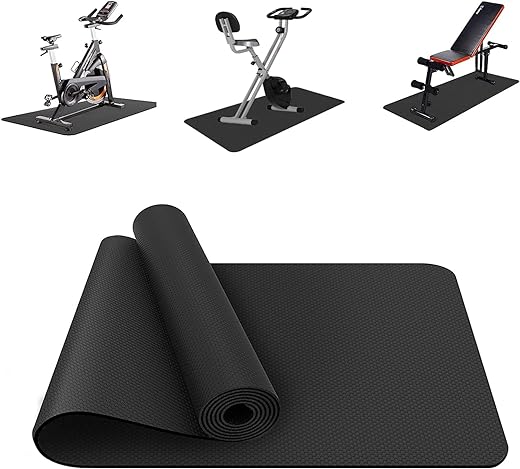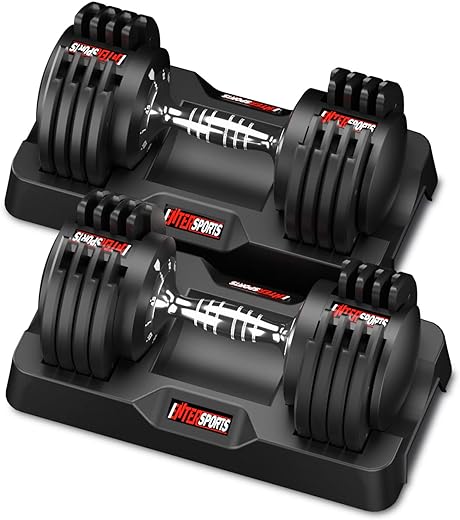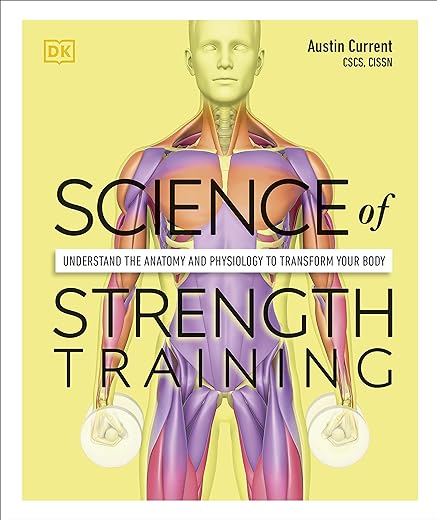Are you overwhelmed by conflicting information about strength training? Do you find yourself unsure of what to believe when it comes to building muscle and getting stronger? In this blog post, we aim to address these concerns by debunking common strength training myths with evidence-based facts. Join us as we uncover the truth behind these misconceptions and empower you with accurate information to help you on your fitness journey.
The Fear of Becoming Bulky
Many people, particularly women, have a common misconception that engaging in strength training will lead to a bulky, overly muscular physique. This fear often deters them from incorporating weightlifting into their fitness routine. However, let’s dig deeper and debunk this myth about strength training and bulky muscles.
Lean Muscle Mass and Weight Loss
Building Lean Muscle
Contrary to popular belief, strength training does not automatically bulk up your body. Instead, it helps you build lean muscle mass. Lean muscle is denser and more compact than fat, giving you a toned and sculpted appearance. Incorporating resistance exercises, such as using Bowflex SelectTech Adjustable Dumbbells, can effectively increase muscle definition without adding bulk.
Aiding in Weight Loss
Strength training boosts your metabolism as lean muscle tissue burns more calories at rest compared to fat. Therefore, incorporating strength exercises, like TRX Suspension Trainer, into your workout regimen can accelerate weight loss. This is because your body continues to burn calories even after you’ve finished your workout.
Practical Examples
To better understand the impact of strength training on body composition, consider the following practical examples:
- Example 1:
- Scenario:
- Sarah started including strength training with Nike Training Club app into her fitness routine.
- Outcome:
- After a few weeks, Sarah noticed increased muscle definition without looking bulky.
- Example 2:
- Scenario:
- Jason incorporated weightlifting using Rogue Fitness Barbell into his workouts.
- Outcome:
- Jason experienced improved strength and a more sculpted physique without gaining excess bulk.
Benefits of Strength Training
When it comes to debunking the myth about strength training and bulky muscles, the benefits are significant:
- Increased Metabolism
- Improved Muscle Tone
- Enhanced Strength and Endurance
- Boosted Confidence
It’s important to note that the fear of becoming excessively muscular should not hinder individuals, especially women, from harnessing the empowering benefits of strength training. By incorporating the right exercises and equipment, such as Lululemon Align Leggings for comfort during workouts, you can achieve a lean, toned physique without the bulk.
Myth: Cardio is more effective for fat loss than strength training
In the realm of fitness, there is a common misconception that cardio exercises are the most effective for fat loss. While cardio indeed helps burn calories during the workout, strength training, also known as resistance training, can be equally, if not more, effective in achieving fat loss goals. In this blog, we’ll delve into the benefits of strength training and why it should not be overshadowed by cardio when it comes to weight management.
Understanding the Science Behind Fat Loss
When undertaking a weight loss journey, it is essential to comprehend how the body metabolizes fat and calories. While cardio exercises primarily focus on increasing calorie expenditure during the workout, strength training has a significant impact on metabolism even after you’ve left the gym. How does this work?
- Building Muscle Mass: Strength training involves lifting weights or using resistance bands to work your muscles, which, in turn, leads to muscle hypertrophy or growth.
- Boosting Metabolism: Muscle tissue is metabolically more active than fat tissue, meaning that having more muscle increases your basal metabolic rate (BMR) – the number of calories your body burns at rest.
- Continuous Fat Burning: With an increased muscle mass, your body becomes more efficient at burning calories even when you are not physically active.
Case Studies and Success Stories
To illustrate the effectiveness of strength training for fat loss, let’s consider a few real-life examples:
- Fitbit Charge 4 Fitness and Activity Tracker: Users who incorporated strength training into their exercise routines, as tracked by the Fitbit Charge 4, reported significant reductions in body fat percentage over time compared to those who solely relied on cardio exercises.
- Bowflex Home Gym: Individuals who used the Bowflex Home Gym, combining strength training with cardiovascular workouts, witnessed a more sculpted physique and faster fat loss results within a few weeks of consistent training.
Practical Tips for Incorporating Strength Training
Are you convinced to give strength training a try? Here are some practical tips to get started:
- Start with bodyweight exercises like squats, lunges, and push-ups if you are new to strength training.
- Gradually incorporate resistance training equipment such as dumbbells, kettlebells, or resistance bands to challenge your muscles further.
- Consult a certified fitness trainer to design a personalized strength training program tailored to your fitness goals and abilities.
Myth: You Have to Lift Heavy Weights to See Results
Weightlifting is a foundational component of most fitness regimens. However, there is a misconception that lifting heavy weights is the only way to see significant results. In reality, lifting lighter weights with proper form and higher repetitions can also lead to muscle strength and endurance gains. Let’s debunk the myth that heavy lifting is the only path to success in the world of weight training.
Understanding Muscle Growth
The Role of Muscle Fiber Recruitment
- Contrary to popular belief, lifting lighter weights for higher repetitions can activate more muscle fibers compared to lifting heavier weights. This increased muscle fiber recruitment is crucial for muscle growth and endurance. Think about it like this: if you lift a lighter weight for more reps, you’re engaging your muscles more continuously compared to fewer reps with a heavier weight.
Benefits of Lighter Weights
Muscle Stamina and Endurance
- Lighter weights can help improve muscle stamina and endurance, making them ideal for certain types of training, such as metabolic conditioning or circuit training. With proper form and focus, lighter weights can challenge your muscles in different ways than heavy weights, leading to enhanced endurance over time.
Reduced Injury Risk
- Lifting lighter weights can reduce the risk of injury since proper form is often easier to maintain with lighter loads. This can be particularly beneficial for beginners or those recovering from injuries, as it allows for safer progression in strength training without compromising on effectiveness.
Practical Examples
Dumbbells vs. Barbells: A Comparison
- Dumbbells: Brands like HexoTech or IronGrip offer adjustable dumbbells with various weight settings, making them versatile for both heavy and light lifting.
- Barbells: Models like Rogue Ohio Bar are excellent for heavy lifting, but don’t discount lighter barbells like the Titan Fitness 15 lb Training Bar for endurance-focused workouts.
Myth: Strength training is only for young people
Strength training has long been associated with young athletes and bodybuilders, but the reality is that it offers tremendous benefits for individuals of all ages. Let’s debunk the myth that strength training is only for the young and explore how it can positively impact bone density, balance, and overall quality of life at any stage.
For Older Adults: Maintaining Bone Density and Preventing Osteoporosis
One of the key benefits of strength training for older adults is its role in maintaining bone density and preventing osteoporosis. As we age, our bones naturally lose density and strength, making us more susceptible to fractures and osteoporosis. Strength training, particularly with equipment like the ProForm 235 CSX Recumbent Bike, can help combat this by stimulating bone growth and increasing bone mineral density.
Benefits of Strength Training for Older Adults:
- Prevention of Osteoporosis: By putting stress on bones through weight-bearing exercises, strength training helps increase bone density and decrease the risk of fractures.
- Improvement in Balance: Strengthening muscles through resistance training can enhance stability and reduce the likelihood of falls, crucial for older individuals.
For Adults of All Ages: Improving Overall Quality of Life
Strength training is not just about building muscle mass; it’s about improving overall quality of life. Whether you’re in your 30s, 40s, or beyond, incorporating strength training into your routine can have a profound impact on your physical and mental well-being.
Benefits of Strength Training for Adults of All Ages:
- Increased Metabolism: Muscle burns more calories at rest than fat, so by increasing muscle mass through strength training, you can boost your metabolism.
- Enhanced Mental Health: Studies have shown that strength training can reduce symptoms of anxiety and depression, promoting better mental health.
In conclusion, strength training is a versatile and indispensable component of a healthy lifestyle for people of all ages. By incorporating it into your routine with equipment like the Bowflex PR1000 Home Gym, you can reap a host of benefits that extend far beyond just physical appearance. Remember, it’s never too late to start reaping the rewards of strength training!
Separating Fact from Fiction
As a concluding note, dispelling these myths underscores the significance of integrating strength training into your exercise regimen. Adapting your workouts to align with your objectives and capabilities is crucial for maximizing results.
Building Strength FAQs
When starting a strength training regimen, it is important to follow safety precautions to prevent injuries. Some key precautions include:
- Warm-up properly before starting your workout to prepare your muscles and joints.
- Use proper form and technique while performing exercises to avoid strain or injury.
- Start with lighter weights and gradually increase the intensity to build strength safely.
- Ensure proper rest between workout sessions to allow your muscles to recover.
- Stay hydrated and listen to your body to avoid overexertion.
- Consult with a fitness professional to create a personalized workout plan tailored to your fitness level and goals.By following these safety precautions, you can reduce the risk of injuries and maximize the benefits of your strength training regimen.
Some common myths associated with strength training include:
- Myth: Strength training will make you bulky. Fact: Strength training actually helps build lean muscle mass and increase metabolism, which can help with fat loss.
- Myth: Lifting weights is dangerous for your joints. Fact: When done with proper form and technique, strength training can actually help improve joint health and reduce the risk of injury.
- Myth: Strength training is only for young people. Fact: People of all ages can benefit from strength training, including older adults who can improve bone density and prevent age-related muscle loss.
- Myth: You need to spend hours in the gym to see results. Fact: You can achieve significant results with as little as 20-30 minutes of strength training a few times a week, especially when focusing on compound exercises.
It’s essential to separate fact from fiction when it comes to strength training to ensure you’re following a safe and effective workout routine.
One common misconception about strength training for women is the fear of becoming too bulky or masculine. In reality, women typically have lower levels of testosterone compared to men, making it much more challenging for them to develop large, bulky muscles. Strength training actually helps women build lean muscle mass, increase metabolism, improve bone density, and enhance overall physical health. It is an effective way for women to achieve strength, tone their bodies, and improve their overall fitness levels without the fear of excessive muscle growth.
To see significant results from strength training, it is generally recommended to engage in strength training activities at least 2-3 times per week. This frequency allows for sufficient stimulus to build and maintain muscle mass and strength. Consistency and progressively increasing the intensity of your workouts are also important factors in achieving positive results from strength training.
Strength training offers a range of benefits beyond just muscle building. Some of the additional benefits include:
- Increased Metabolism: Muscle tissue burns more calories at rest than fat tissue, so the more muscle you have, the higher your basal metabolic rate. This can support weight management and overall health.
- Improved Bone Health: Strength training results in increased bone density, which can help prevent osteoporosis and reduce the risk of fractures.
- Enhanced Mood and Mental Health: Exercise, including strength training, has been shown to release endorphins and improve mood, reduce symptoms of anxiety and depression, and enhance overall well-being.
- Enhanced Physical Performance: Strength training can improve overall strength, power, and endurance, which can enhance performance in various sports and activities of daily living.
- Reduced Risk of Chronic Diseases: Regular strength training has been linked to a decreased risk of chronic conditions such as heart disease, type 2 diabetes, and certain types of cancer.
In conclusion, strength training extends well beyond muscle building to offer a multitude of health benefits that can improve overall quality of life.










































![Gritin Resistance Bands, [Set of 5] Skin-Friendly Resistance Fitness Exercise Loop Bands with 5 Different Resistance Levels - Carrying Case Included - Ideal for Home, Gym, Yoga, Training](https://m.media-amazon.com/images/I/617NmwvU4tL._SS520_.jpg)




